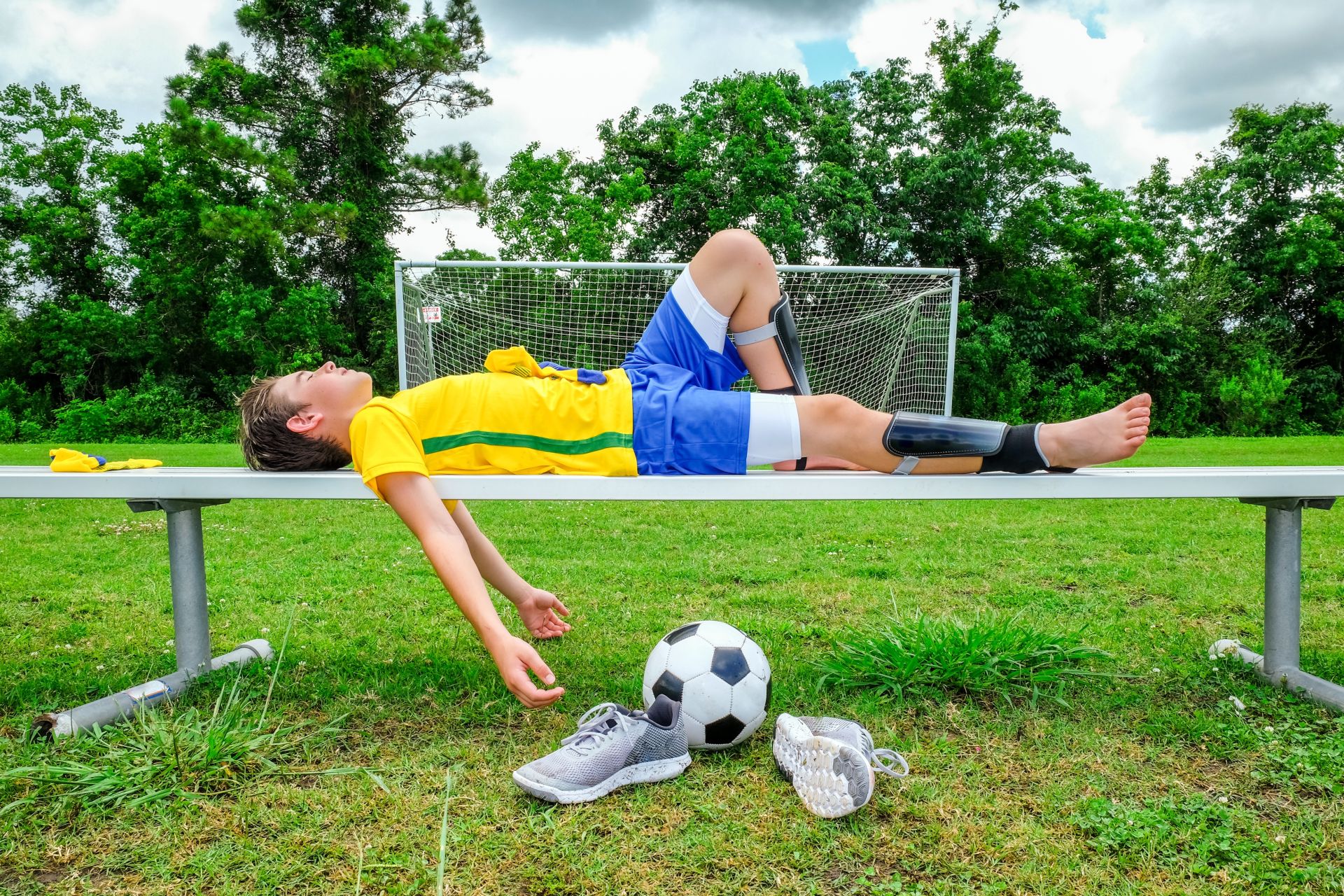Summer Stories from the Front Lines: What July Teaches Us About Patient Care
Jul 14

Summer Stories from the Front Lines
What July Teaches Us About Patient Care
By Special Guest: Lori Young, RN, BSN
Every July, I'm reminded why I love and sometimes dread summer nursing. Last week, I had three patients that perfectly captured what this season brings to our profession. There was Ginger, an 8-year-old who spent too long at the community pool and came in lethargic and confused. Then came Joseph, a 72-year-old who thought his air conditioner breaking was "no big deal" until his daughter found him disoriented in his stuffy apartment. Finally, there was Blake, a college athlete who pushed through a summer training session despite feeling dizzy and nauseous.
Each of these patients taught me something different about summer healthcare, and together they remind me why this season requires a special kind of nursing awareness.
When the Heat Becomes the Enemy
Ginger's story started like so many others this month. Her mom brought her in after she'd been at the pool for six hours, playing and swimming with friends. "She just seemed off," her mother explained. "Tired, cranky, not herself." When I took Ginger's temperature, it was 102.8°F, and she couldn't tell me what day it was.
Heat exhaustion in children looks different than in adults. Kids often don't recognize the early warning signs, and by the time parents notice something's wrong, dehydration has already set in. Ginger's case reminded me that children's higher surface-area-to-body-weight ratio means they heat up faster than adults, and their natural inclination to keep playing overrides their body's warning signals.
We started cooling measures immediately and pushed fluids, but what struck me most was how quickly things had escalated. Her mother had been checking on her regularly, but heat illness can progress rapidly once it starts. Ginger recovered well, but her case reinforced my belief that summer safety education needs to be more specific than "drink water and take breaks."
Joseph's situation was entirely different but equally preventable. When his air conditioner broke during a heat wave, he decided to "tough it out" rather than ask for help or spend money on repairs. His daughter found him three days later, confused and severely dehydrated, in an apartment that felt like an oven.
Older adults face unique challenges during heat waves that go beyond just feeling uncomfortable. Age-related changes in kidney function mean they don't concentrate urine as effectively, leading to faster dehydration. Many take medications like diuretics or beta-blockers that interfere with normal heat regulation. Perhaps most importantly, some older adults lose their sense of thirst or don't want to drink fluids to avoid frequent bathroom trips.
Joseph's case reminded me that air conditioning isn't a luxury for elderly patients during summer heat. It's a medical necessity, and we need to help our older patients understand this distinction. Social workers in our facility have compiled resources for emergency cooling assistance and utility bill help specifically for situations like Joseph's.
The Athlete's Dilemma
Blake presented a different kind of challenge. This 20-year-old college soccer player had been training for two hours in 95-degree heat when he started feeling dizzy and nauseous. Instead of stopping, he pushed through another hour before his coach finally insisted he come to the ER.
Young athletes often have a complicated relationship with their bodies' warning signals. They're trained to push through discomfort, to view pain and fatigue as obstacles to overcome rather than messages to heed. Blake's case highlighted how this mindset can become dangerous when heat is involved.
What made Blake's situation particularly concerning was his attitude when he arrived. He kept insisting he was "fine" and just needed to "hydrate and get back out there." Even with a core temperature of 103.2°F and obvious signs of heat exhaustion, he was focused on missing practice rather than on his health.
We see this pattern regularly during summer months, especially with high school and college athletes. The pressure to perform, combined with the natural invincibility feeling of youth, creates a perfect storm for heat-related emergencies. Coaches and athletic trainers are getting better at recognizing the signs, but the athletes themselves often resist early intervention.
The Ripple Effects
These three cases got me thinking about how summer health challenges extend beyond the immediate patients we see. Ginger's mother had to take time off work and arrange childcare for her other children during the ER visit. Joseph's daughter felt guilty for not checking on him sooner, even though she'd been calling daily. Blake's parents drove four hours from his hometown, worried sick about their son who'd seemed invincible just days before.
Summer health emergencies often involve entire families and support systems. The 16-year-old who gets severe sunburn at the beach affects the whole family vacation. The construction worker who develops heat exhaustion impacts not just his health but his family's income and his coworkers' safety awareness.
This broader impact has changed how I approach patient education. Instead of just talking to the patient, I try to include family members in prevention discussions. When I discharge an elderly patient after a heat-related admission, I make sure their adult children understand the warning signs and have a plan for future heat waves.
The Teaching Moments
Every summer admission becomes a teaching opportunity, not just for the patient but for their whole circle. Ginger's case led to a conversation with her mother about pool safety that went far beyond heat illness. We talked about supervision standards, the difference between heat exhaustion and heat stroke, and why kids need breaks even when they don't want them.
Joseph's situation opened up discussions about home safety for aging adults, the importance of having emergency contacts, and how to access community cooling centers during heat waves. His daughter left with phone numbers for utility assistance programs and a clear understanding of when air conditioning becomes medically necessary.
Blake's visit turned into an education session about the difference between normal training discomfort and dangerous heat illness symptoms. We talked about the importance of pre-hydration, recognizing early warning signs, and why coaches' instructions to sit out are medical advice, not suggestions.
What Summer Has Taught Me
After fifteen years of summer nursing, I've learned that prevention education works best when it's specific and practical. Telling someone to "stay hydrated" isn't nearly as effective as explaining that they should drink water before they feel thirsty, that clear urine is a good hydration indicator, and that thirst is actually a late sign of dehydration.
I've also learned that summer health challenges often reveal underlying vulnerabilities. The elderly patient who develops heat exhaustion might also have medication compliance issues or social isolation problems. The child who gets severe sunburn might come from a family that needs education about skin cancer prevention or doesn't have access to quality sunscreen.
Summer nursing has taught me to look beyond the immediate presentation and consider the whole picture. The teenager with heat exhaustion might be working too many hours at an outdoor job to help support their family. The athlete with dehydration might be under pressure to perform for a scholarship opportunity.
Moving Forward
As we progress through July and into August, I'm reminded that summer health challenges are largely preventable with the right knowledge and preparation. Our role as nurses extends beyond treating heat exhaustion and sunburn to educating patients and families about prevention.
The stories of Ginger, Joseph, and Blake represent thousands of similar cases across the country this summer. Each one is an opportunity to not just provide excellent acute care but to prevent future emergencies through education and community awareness.
Summer will always bring its challenges to healthcare, but understanding the patterns and staying alert to the warning signs helps us provide better care when our patients need it most. Whether it's recognizing the early signs of heat illness in a child, understanding the unique vulnerabilities of elderly patients during heat waves, or helping young athletes balance performance goals with safety, summer nursing requires a special combination of clinical knowledge and practical wisdom.
Contact
-
My Education Resources and Solutions, LLC
-
PO Box 39566
Greensboro, NC 27438 -
hello@myerscomplete.com
-
(336) 988-7076
Become a member
Your gateway to advanced, cloud-based CE solutions.

